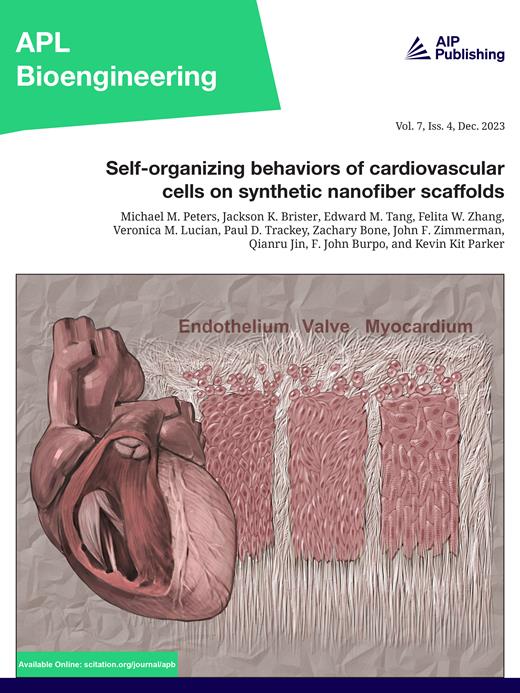通过 ECoG-LSCI 探索 1 型糖尿病对脑神经血管功能的转化影响
IF 6.6
3区 医学
Q1 ENGINEERING, BIOMEDICAL
引用次数: 0
摘要
1 型糖尿病(T1DM)可导致视网膜病变、肾病和周围神经病变等并发症,从而导致脑功能障碍。本研究调查了 T1DM 对小鼠脑神经血管功能的影响。已知链脲佐菌素(STZ)可诱导动物患上 T1DM,因此我们使用 STZ 诱导的糖尿病模型来评估高血糖对大脑形态和神经血管组织的影响。神经血管耦合是神经元活动和脑血流之间的联系,它维持着大脑的功能。ECoG-LSCI技术结合了脑皮层电图(ECoG)和激光斑点对比成像(LSCI)技术,可检测作为神经血管耦合标志的皮层扩张抑制(CSD),并测量相应的神经血管功能。我们的结果表明,在STZ组中,高血糖影响了兴奋性神经传递和新陈代谢,导致细胞间信号传递、躯体感觉诱发电位(SSEP)振幅和CSD传输速率降低。Western blot数据进一步显示,STZ组的脑源性神经营养因子(BDNF)和神经元核抗原水平降低。据推测,脑内葡萄糖代谢异常以及AKT和GSK3磷酸化增加是导致这些降低的原因。总之,这项研究强调了葡萄糖代谢在正常脑生理学中的重要性,并证明高血糖会破坏神经血管耦合,影响脑神经血管功能,而且 CSD 的程度与脑组织损伤的程度呈正相关。要全面了解这些发现的相关机制和意义,进一步的研究必不可少。本文章由计算机程序翻译,如有差异,请以英文原文为准。
Exploring the translational impact of type 1 diabetes on cerebral neurovascular function through ECoG-LSCI
Type 1 diabetes mellitus (T1DM) can result in complications such as retinopathy, nephropathy, and peripheral neuropathy, which can lead to brain dysfunction. In this study, we investigated the effects of T1DM on cerebral neurovascular function in mice. Streptozotocin (STZ) is known to induce T1DM in animals; thus, we used an STZ-induced diabetes model to evaluate the effects of hyperglycemia on brain morphology and neurovascular tissue. Neurovascular coupling is the connection between neuronal activity and cerebral blood flow that maintains brain function. The ECoG-LSCI technique combines electrocorticography (ECoG) and laser speckle contrast imaging (LSCI) to detect cortical spreading depression (CSD) as a marker of neurovascular coupling and measure corresponding neurovascular function. Our results suggested that in the STZ group, hyperglycemia affected excitatory neurotransmission and metabolism, leading to reductions in intercellular signaling, somatosensory evoked potential (SSEP) amplitudes, and CSD transmission rates. Western blot data further revealed that brain-derived neurotrophic factor (BDNF) and neuronal nuclear antigen levels were reduced in the STZ group. Abnormalities in glucose metabolism in the brain and increased phosphorylation of AKT and GSK3 are hypothesized to be responsible for these decreases. Overall, this study highlights the importance of glucose metabolism in normal brain physiology and demonstrates that hyperglycemia disrupts neurovascular coupling and affects cerebral neurovascular function and that the degree of CSD is positively correlated with the extent of brain tissue damage. Further research is essential to gain a complete understanding of the related mechanisms and the implications of these findings.
求助全文
通过发布文献求助,成功后即可免费获取论文全文。
去求助
来源期刊

APL Bioengineering
ENGINEERING, BIOMEDICAL-
CiteScore
9.30
自引率
6.70%
发文量
39
审稿时长
19 weeks
期刊介绍:
APL Bioengineering is devoted to research at the intersection of biology, physics, and engineering. The journal publishes high-impact manuscripts specific to the understanding and advancement of physics and engineering of biological systems. APL Bioengineering is the new home for the bioengineering and biomedical research communities.
APL Bioengineering publishes original research articles, reviews, and perspectives. Topical coverage includes:
-Biofabrication and Bioprinting
-Biomedical Materials, Sensors, and Imaging
-Engineered Living Systems
-Cell and Tissue Engineering
-Regenerative Medicine
-Molecular, Cell, and Tissue Biomechanics
-Systems Biology and Computational Biology
 求助内容:
求助内容: 应助结果提醒方式:
应助结果提醒方式:


